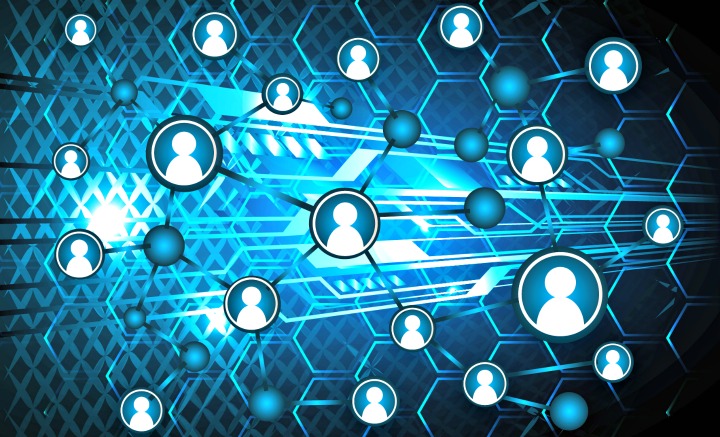How the ‘Internet of Things’ Is Changing the Way We Do Business

By Autumn Giusti
Technology has made it possible for devices in cars to report accidents to insurers moments after they happen, and for home-monitoring systems to alert residents before an unseen water leak causes significant damage.
Through telematics devices, wearable technology and sensors that can collect data and calculate risks for cars, homes and people, the so-called Internet of Things is changing the way consumers buy insurance.
The global IoT insurance market is expected to reach $42.76 billion by 2022 because of the growing adoption of IoT products that provide data for insurers to help reduce risks for individuals, according to a 2017 MarketsandMarkets report.
“Today’s consumers demand the ability to purchase almost anything from anywhere via their mobile device, including insurance. As such, the IoT is driving a seismic shift in how consumers buy and interact with insurance products,” says Vik Renjen, senior vice president for banking, financial services and insurance at Sutherland, a consulting firm that has been deploying new technologies to help insurers benefit from IoT.
Data analytics is a major factor in driving how people buy insurance, Renjen says. For example, data analytics helped one of Sutherland’s clients, a life insurance carrier, increase the accuracy of its premiums by 25 percent.
“We can expect to see continued and expanded use of technology, such as personal technology or ‘wearables,’ and sensors in personal and commercial vehicles to drive data points in assessing risk and ratings,” Renjen says.
‘Data explosion’ expected by 2025
A report by consulting firm A.T. Kearney predicts that IoT will be pervasive by 2025, with connected “things” driving a data explosion with sensors embedded in cars, buildings and wearable devices — so much so that a family of four could have more than 100 connected devices.
Also by that year, the report predicts, half of cars on the road will have advanced driver-assistance systems, and half of U.S. households will be connected, thanks to IoT-enabled, integrated monitoring and control devices. Many of these devices will include simple DIY installation.
Neeti Bhardwaj, a principal at A.T. Kearney who helped author the report, says there has been immense development in terms of how IoT innovations and technology in general are modifying the way people buy insurance.
“The penetration of telematics continues to rise,” she says.
One of the trends that has emerged with the advent of IoT is a shift from protection to prevention. Many cars already come equipped with telematics devices that can monitor driving behavior and provide alerts if the driver is speeding, or if the car is in need of preventative maintenance.
IoT technology can also help minimize risks in the home. For example, smart home management systems such as Nest and Iris have sensors that can detect water leaks anywhere in the home and ultimately prevent damage. Bhardwaj points out that 70 percent of insurance claims in homes are due to water leakage.
Another trend that IoT is addressing is the expectation of consumers to receive end-to-end service from their insurance. Traditionally, a consumer would call the insurer to report an accident, and the insurer would give the consumer directions for where to take the car for repairs and how to obtain a claims check.
Now, IoT devices make it possible for companies to also arrange for a rental or car service to pick up the driver after an accident.
IoT devices are also starting to show up in motorbikes, boats and other assets beyond just homes and cars.
“As the proliferation of IoT devices in assets increases, the ability to collect and automatically react to that data also increases,” Bhardwaj says.
Claims process to become simpler
More data can ultimately lead to a simpler claims process for the consumer. For example, if a person gets into a crash, a telematics device in the vehicle can send an instant report of the crash to the insurance company, along with details such as what was happening at the time of the crash, the extent of the damage and the driver’s behavior and speed.
“Previously, you had to call your insurance to file your claim. It took maybe three weeks for the claim to get processed. But in this instance, it can just go through the system automatically,” Bhardwaj says.
In terms of the “connected self,” IoT is an area that’s not quite as mature as it is in property and casualty, although it’s continuing to evolve, Bhardwaj says.
“I think once they figure out what some of the right use cases are, the uses of IoT are tremendous.”
Most health-related IoT uses right focus on well-being. Devices such as the Fitbit, Apple Watch and Garmin can track a person’s activity levels, heart rate, sleep patterns and other health information. Some health plans award gift cards, points and other incentives to people who monitor their lifestyles through wearables and apps.
In the future, Bhardwaj says, these devices could measure blood pressure, deliver prescriptions and directly contact doctors in an emergency.
“If you have a car crash, the insurer can get to you right away. So if your blood pressure is elevated, could your doctor get to you right away?” Bhardwaj asks.
With the global economy being in the age of the consumer, IoT will continue to drive change to the way insurance is designed and developed, how ratings and pricing are calculated, how premiums are applied and how services are delivered to customers, Renjen says.
“To be successful, insurance companies will need to know their customers and understand their needs at a deeper level,” he says.
